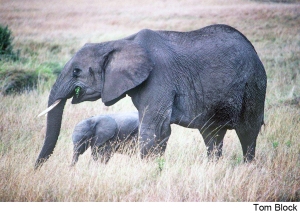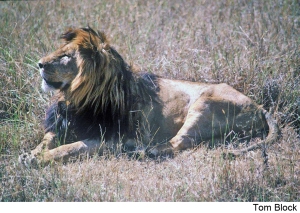 istockphoto
istockphoto
by Fyllis Hockman
For people contemplating an Africa safaris, the first place that comes to mind may well be Kenya. But many aficionados favor Tanzania, thanks to its vast Serengeti plains and a nearby volcanic caldera called Ngorongoro.
On my trip to this East African country not long ago, Ngorongoro was far and away the star. Occupying just 102 square miles (264 sq. km), this 2½-million-year-old collapsed volcano is a virtual microcosm of this region of the continent, home to some 30,000 examples of every conceivable species — a distinction that makes it unique in the world. And this means that unlike in some other game parks, here you can spot and snap the “Big Five” (lions, elephants, rhinos, leopards, Cape buffalos) and dozens of other species without high-powered binoculars or a huge telephoto lens.
Moreover, Ngorongoro’s creatures seem surprisingly tolerant of sharing space with each other as well as with humans. Hyenas, zebras, wildebeests, ostriches, elephants, lions, warthogs, hippos, baboons, cheetahs, and leopards all exist within view of each other. These days in Africa it’s not always easy to spot cheetahs and leopards, except for here.
 Of course, such a concentration of fauna does have its consequences: With the number of visitors increasing each year, conservation and sustainability issues are becoming more and more a concern. Efforts are in the offing to either restrict access or increase entrance fees.
Of course, such a concentration of fauna does have its consequences: With the number of visitors increasing each year, conservation and sustainability issues are becoming more and more a concern. Efforts are in the offing to either restrict access or increase entrance fees.
Wildlife Up Close
From hatch-roof jeeps 11 of us gawked, ooh-ed, ah-ed, and snapped picture after picture while the critters studiously ignored us. It’s hard to describe the wonder of being ten or so paces from an elephant that’s 12 feet (almost 4 meters) high at the shoulder, its tusks practically reaching the ground. Or a black-maned lion baring its teeth, or half-a-dozen adolescent zebras cavorting around a water hole.
Then, of course, there was the highlight: spotting the black rhino, of which there are only 4,000 left in all of Africa. For such a large (second only to the elephants) and dangerous animal, I found the rhino doesn’t seem to do much. This one just stood there, neither grazing nor charging, simply looking unimpressed with its surroundings—especially us.
The loping antelope, by contrast, are much more graceful and spirited. “Antelope” is actually a generic term covering a wide range of animals, from 11-pound (four-kilogram) dik diks to 2,000-pound (907-kilo) elands. In between are the springboks, riverbucks, hardebeests, wildebeests, impalas, topis, gazelles and others, with horns from curved to straight, twisted to rippled, rounded to wavy.
Leopards & Cheetahs
We got lucky. Not only did we see two leopards virtually indistinguishable from the tree branches they were wound around, but also a family of cheetahs frolicking nearby. Four cubs romped and rolled over each other, periodically returning to mom for grooming and reassurance.
Mama, though, was eyeing several gazelles about a quarter-mile away. They played a little cat-and-gazelle game, with the leopard debating whether or not to fetch some lunch. Prey and predator eyed each other, each evaluating its position. You could feel the tension, irrevocably caught up in the life-and-death dance that forms the essence of their existence. I was both relieved and disappointed when the cheetah decided against take-out.
 And sometimes success — depending upon one’s perspective — is obvious. Case in point: the lion that was so close, I could see its whiskers tremble. The creature’s stomach was distended, clearly indicating how well it had feasted the night before. Observed our guide, Joseph Ndunguru, “Thirty to forty pounds of raw meat will satiate him for four or five days.”
And sometimes success — depending upon one’s perspective — is obvious. Case in point: the lion that was so close, I could see its whiskers tremble. The creature’s stomach was distended, clearly indicating how well it had feasted the night before. Observed our guide, Joseph Ndunguru, “Thirty to forty pounds of raw meat will satiate him for four or five days.”
One of the most intriguing photo ops was of a flock of flamingoes numbering in the thousands and occupying most of Lake Magadi, at the bottom of the crater. They resembled a feathery pink blanket stretched out along the shoreline.
Ndunguru could turn anyone into a solid amateur zoologist. Before long, members of the group were identifying a previously generic starling as a Ruppells long-tailed glossy and the ubiquitous antelope as a hardebeest or Grant’s gazelle. By the sixth day, it was, “Don’t bother getting up, it’s just another elephant.”
Luxury Safari
A travel story is often enhanced by the obstacles overcome, but this trip didn’t really present any, in good part thanks to the fact that I was traveling with luxury outfitter Abercrombie & Kent. The sun was brighter, the game lodges a mix of luxury and rustic décor, the flies relatively subdued, and the dust lighter than it might have been. I actually returned to my hotel with clothes still resembling the colors they’d started out with.
The roads were another story, a hardship that can’t be avoided unless you walk, which was definitely discouraged. Anyone with back problems — or allergies, for that matter — should think twice about this sort of trip.
Seated on the balcony at the Serengeti Sopa Lodge in Arusha the last morning, I listened to a concerto of birdcalls while two Thompson’s gazelles romped with a topi. A flock of guinea hens grazed within 50 yards, assiduously avoiding a passing warthog.
But what especially struck me was the presence of all the other animals, hidden in grass and shrubs, that I knew I was not seeing. Occupying those endless plains were millions of hoofed creatures continually on the move in search of pasture, constantly watched and pursued by predators whose own survival depends upon feeding off them. For awhile, I watched for the slightest movement, as a hungry predator might do as it seeks its next meal. Then I reluctantly left for the airport, knowing (or certainly hoping) that this strange combination of imposing terrain, tenuous commingling of wildlife — and, yes, inevitable brutal killings — will continue long after I’m gone.
For more on Africa wildlife excursions, see the Tripatini blog's Safaris 101.
Comments